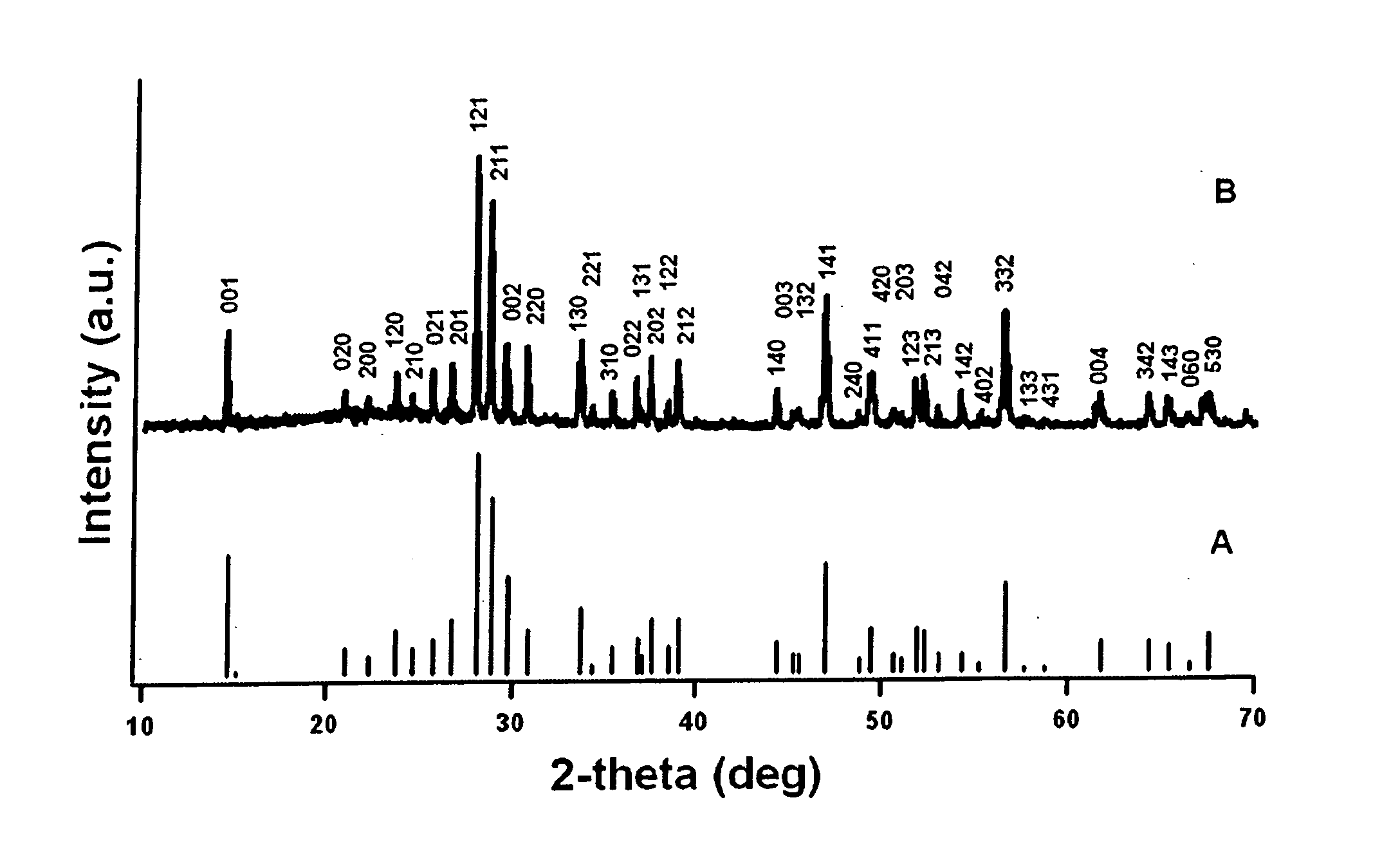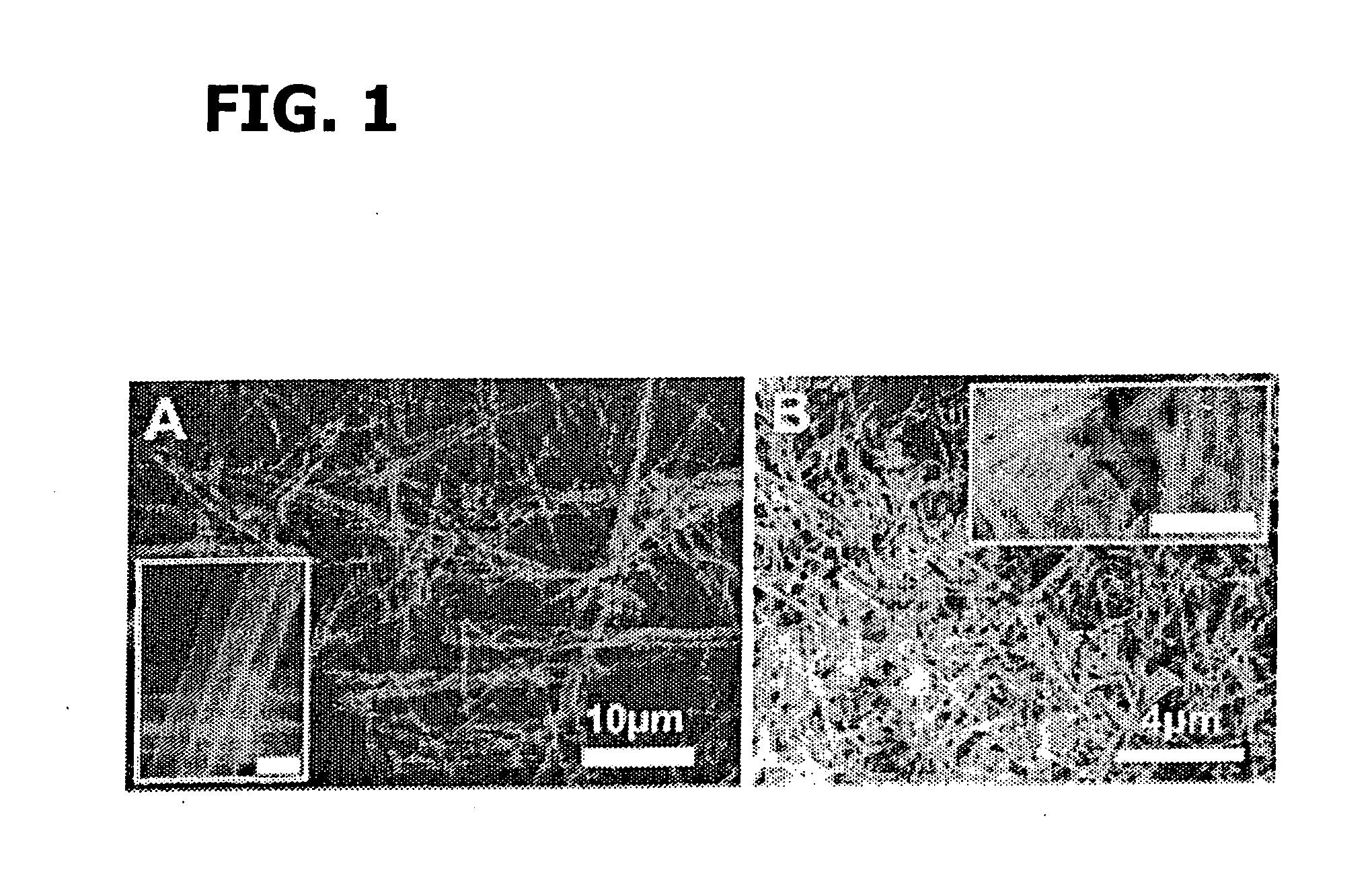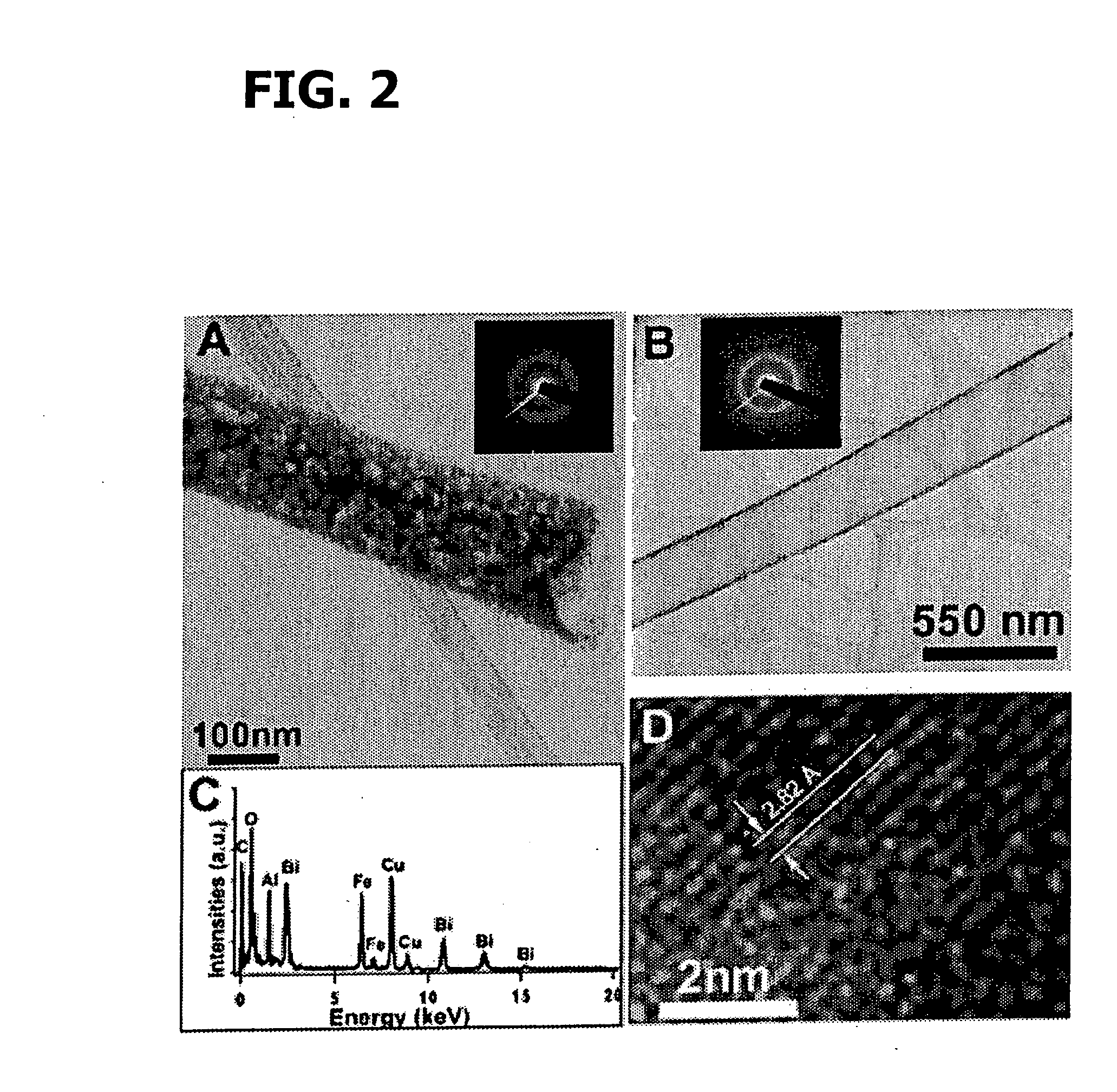Ternary oxide nanostructures and methods of making same
- Summary
- Abstract
- Description
- Claims
- Application Information
AI Technical Summary
Benefits of technology
Problems solved by technology
Method used
Image
Examples
example 1
Synthesis of BiFeO3 Nanotubes Using a Template
[0202] Bi(NO3)3.5H2O and Fe(NO3)3.9H2O with a molar ratio of 1:1 were added successively to ethylene glycol as described in Wada et al., Mater. Sci. Eng., 1996, A217 / 218, 414. and Toshimitsu et al., J. Phys. Chem. Solids, 2003, 64:391, incorporated herein by reference in their entireties. The resulting mixture was stirred at 80° C. for 1 h, after which a transparent sol was recovered upon evaporation of the excess ethylene glycol. Droplets of the sol were deposited using a syringe onto a porous anodic alumina (AAO) template (Whatman Anodisc®) surface with application of pressure (as described in Steinhart et al., Science, 2002, 296:1997, incorporated herein by reference in its entirety). AAO membranes with different pore sizes, such as 200 nm and 100 nm, were used.
[0203] The resultant samples, i.e., AAO templates containing the BiFeO3 precursors, were subsequently oven-dried at 100° C. for an hour, and then preheated to 400° C. for thr...
example 2
Synthesis of Bi2Fe4O9 Nanocubes Using Molten Salt Technique
[0211] Bismuth(III) oxide (Aldrich, 99.99%), iron(III) oxide (Aldrich, nanopowder), and Igepal® CO-630 or NP-9 surfactant (polyoxyethylene(9)nonylphenyl ether, Aldrich) were used as supplied. The choice of this surfactant was governed by its relative non-toxicity and facility of use. Stoichiometric amounts of Bi2O3, Fe2O3, NP-9, and NaCl were mixed (in molar ratios of 1:1:40:6, 3:1:40:6, and 6:1:40:6, respectively, for generation of varying structural motifs), thoroughly ground in an agate mortar, and sonicated.
[0212] In a typical synthesis of Bi2Fe4O9 cubes, 0.5 mmol each of Bi2O3 and Fe2O3 along with 20 mmol of NaCl were mixed thoroughly, to which 2 ml of NP-9 was subsequently added. The resulting mixture was ground for at least 30 min prior to sonication for an additional 5 min. Identical procedures were employed for samples containing different molar ratios of initial precursors. The processed mixture was ultimately pl...
example 3
Doping of the Molten Salt synthesis for BiFeO3—BaTiO3 Solid Solution
[0231] Bismuth(III) acetate (Aldrich, 99.99%), iron(III) oxide (Aldrich, nanopowder), barium oxalate (Aldrich, 97%), titanium dioxide (Alfa Aesar, 99.7%), and Igepal® CO-630 or NP-9 surfactant (polyoxyethylene(9)nonylphenyl ether, Aldrich), NaCl (Mallinckrodt) were used as supplied. Stoichiometric amounts of Bi(CH3CO2)3 and / or BaC2O4 (combined in relevant molar ratios, depending on the desired product), Fe2O3, TiO2, NaCl and NP-9 were mixed in molar ratios of 2:1:2:40:3, thoroughly ground in an agate mortar, and sonicated. The mixture was then placed in a quartz crucible, inserted into a quartz tube, heated at a ramp rate of 5° C. per minute up to an annealing temperature at 820° C. for 3.5 h in a Lindberg tube furnace, and subsequently cooled to room temperature. Samples were subsequently washed several times with distilled water, nitric acid, and distilled water. The as-prepared material was collected by centrifu...
PUM
| Property | Measurement | Unit |
|---|---|---|
| Fraction | aaaaa | aaaaa |
| Temperature | aaaaa | aaaaa |
| Temperature | aaaaa | aaaaa |
Abstract
Description
Claims
Application Information
 Login to View More
Login to View More - R&D
- Intellectual Property
- Life Sciences
- Materials
- Tech Scout
- Unparalleled Data Quality
- Higher Quality Content
- 60% Fewer Hallucinations
Browse by: Latest US Patents, China's latest patents, Technical Efficacy Thesaurus, Application Domain, Technology Topic, Popular Technical Reports.
© 2025 PatSnap. All rights reserved.Legal|Privacy policy|Modern Slavery Act Transparency Statement|Sitemap|About US| Contact US: help@patsnap.com



